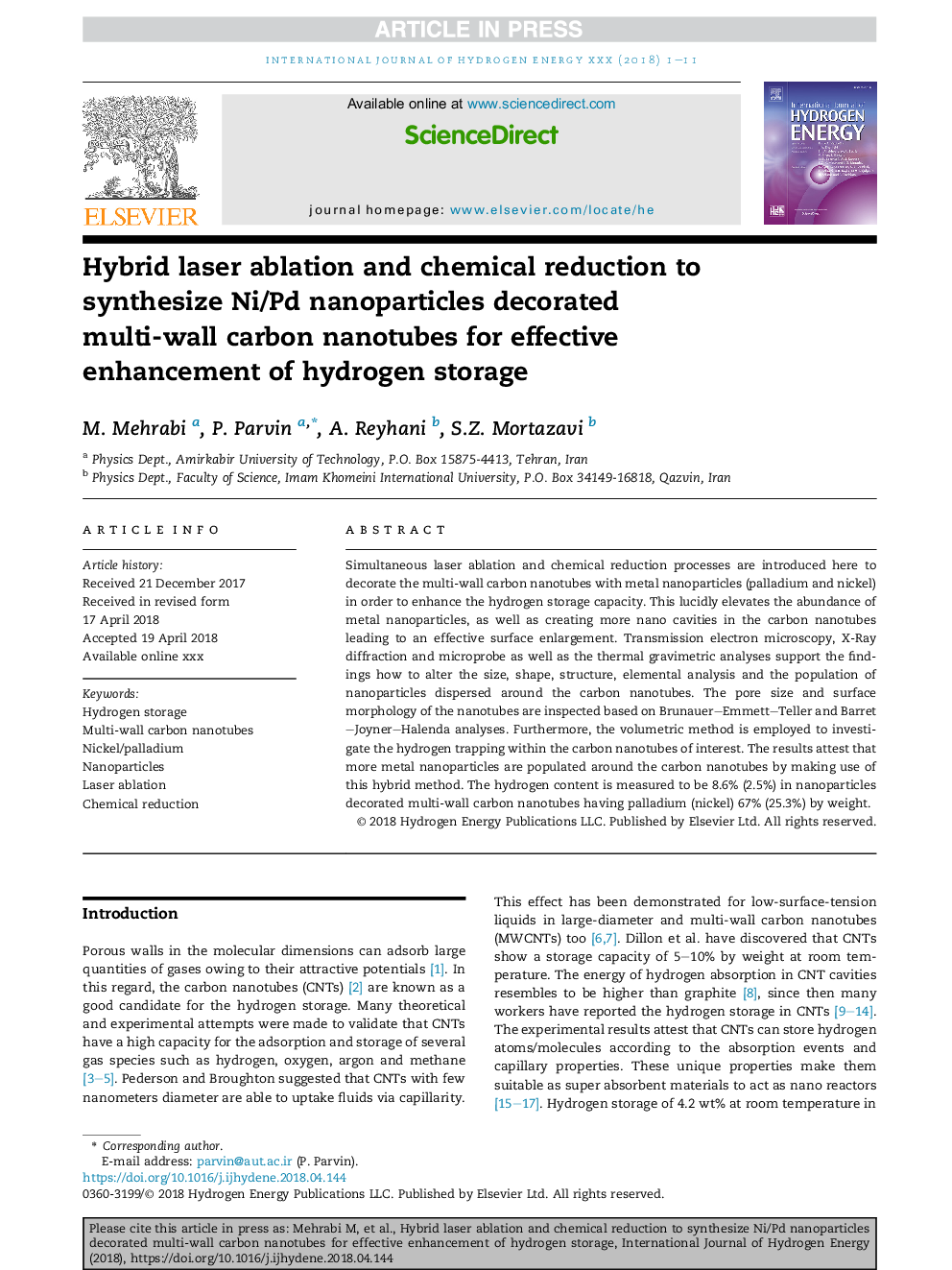| Article ID | Journal | Published Year | Pages | File Type |
|---|---|---|---|---|
| 7705588 | International Journal of Hydrogen Energy | 2018 | 11 Pages |
Abstract
Simultaneous laser ablation and chemical reduction processes are introduced here to decorate the multi-wall carbon nanotubes with metal nanoparticles (palladium and nickel) in order to enhance the hydrogen storage capacity. This lucidly elevates the abundance of metal nanoparticles, as well as creating more nano cavities in the carbon nanotubes leading to an effective surface enlargement. Transmission electron microscopy, X-Ray diffraction and microprobe as well as the thermal gravimetric analyses support the findings how to alter the size, shape, structure, elemental analysis and the population of nanoparticles dispersed around the carbon nanotubes. The pore size and surface morphology of the nanotubes are inspected based on Brunauer-Emmett-Teller and Barret-Joyner-Halenda analyses. Furthermore, the volumetric method is employed to investigate the hydrogen trapping within the carbon nanotubes of interest. The results attest that more metal nanoparticles are populated around the carbon nanotubes by making use of this hybrid method. The hydrogen content is measured to be 8.6% (2.5%) in nanoparticles decorated multi-wall carbon nanotubes having palladium (nickel) 67% (25.3%) by weight.
Related Topics
Physical Sciences and Engineering
Chemistry
Electrochemistry
Authors
M. Mehrabi, P. Parvin, A. Reyhani, S.Z. Mortazavi,
